Classification
3 - C
In general, to build storage facilities for radioactive material, it is necessary to evaluate the influence of the radiation at the site boundary in advance. In the general nuclear facilities, the number of such storages for radioactive material is limited. Therefore it is possible to estimate easily the most critical boundary point where the influence of the radiation is the strongest. In addition, these storage buildings are usually permanent. Therefore, it is not so often to re-evaluate.
On the other hand, if there are many radiation sources in certain area and their conditions are changed or relocated frequently (e.x. nuclear power plant decommissioning, the radioactive waste storage, and the maintenance), it is necessary to evaluate timely the influence of the condition change in advance.
Then, a new system: ARES (Air dose Rate Evaluation System) has been developed to apply in such facilities having multiple radiation sources. The ARES evaluates the dose rate quickly at any specified evaluation point by using the database which is pre-served in advance. The database consists of the information about the radiation sources and the evaluation points, like surface dose rate, position, size, and altitude. This database is customizable depending on the application. Therefore, by customizing the database, ARES can be applied in a variety of applications.
The system configuration diagram is shown in Fig.1.
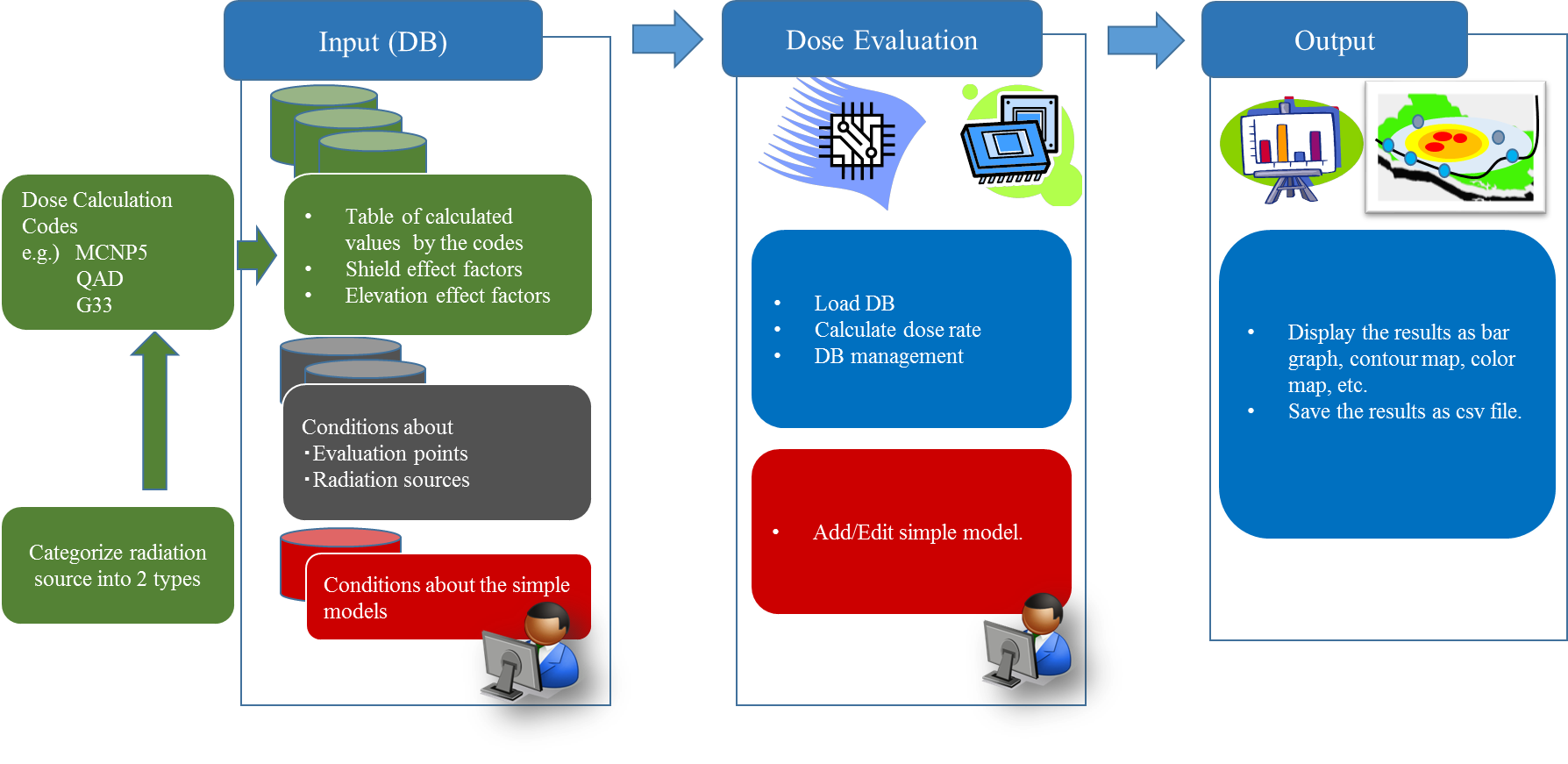
Fig.1 ARES configuration diagram
An example case applied to the facility with various radiation sources such as contaminated water tanks and rubbles is described as followed.
(1) Database of the ARES
The database consists of the calibration factors and dose rate curve of each radiation source calculated by the conventional radiation calculation code like MCNP5, QAD. The terrain information is also stored just as the background of a bitmap file (i.e. non CAD information). All radiation sources are categorized into two types as the detail model or the cylindrical model. (Fig.2) The radiation source with strong dependence on the direction is categorized as the detail model. The dose rate of the detail model is calculated by considering the actual shape of building, the geographical features (including the elevation difference between evaluation point and radiation source). That result is stored into the database. In the case of the cylindrical model, the radiation can be assumed as isotropic. Therefore, the dose rate is stored in the database as the radiation curve as function of distance between the radiation source and the evaluation point. The factor to calibrate the effect of the difference of elevation is also stored in the database. (Fig.3)
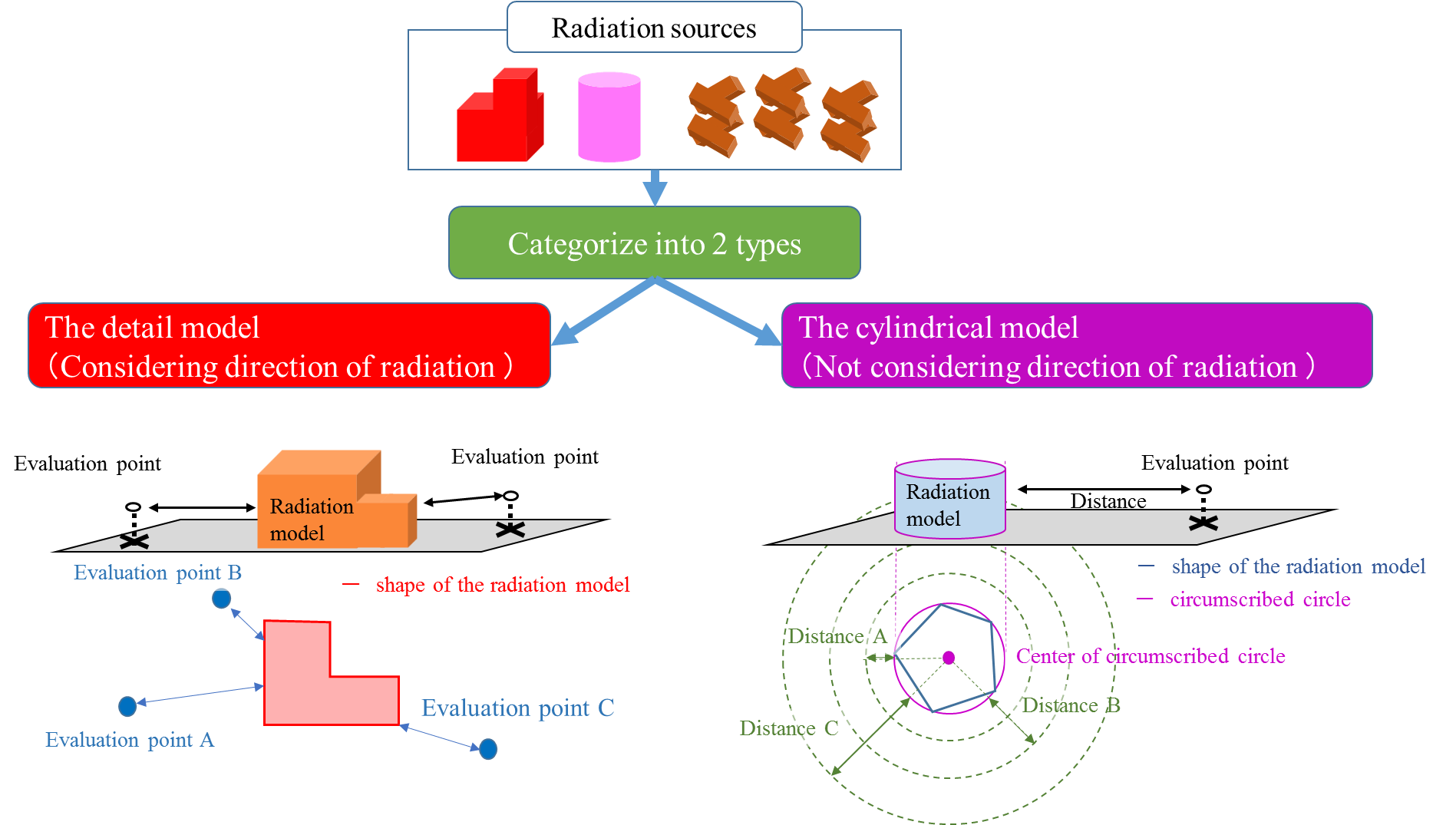
Fig.2 Categorize the radiation source
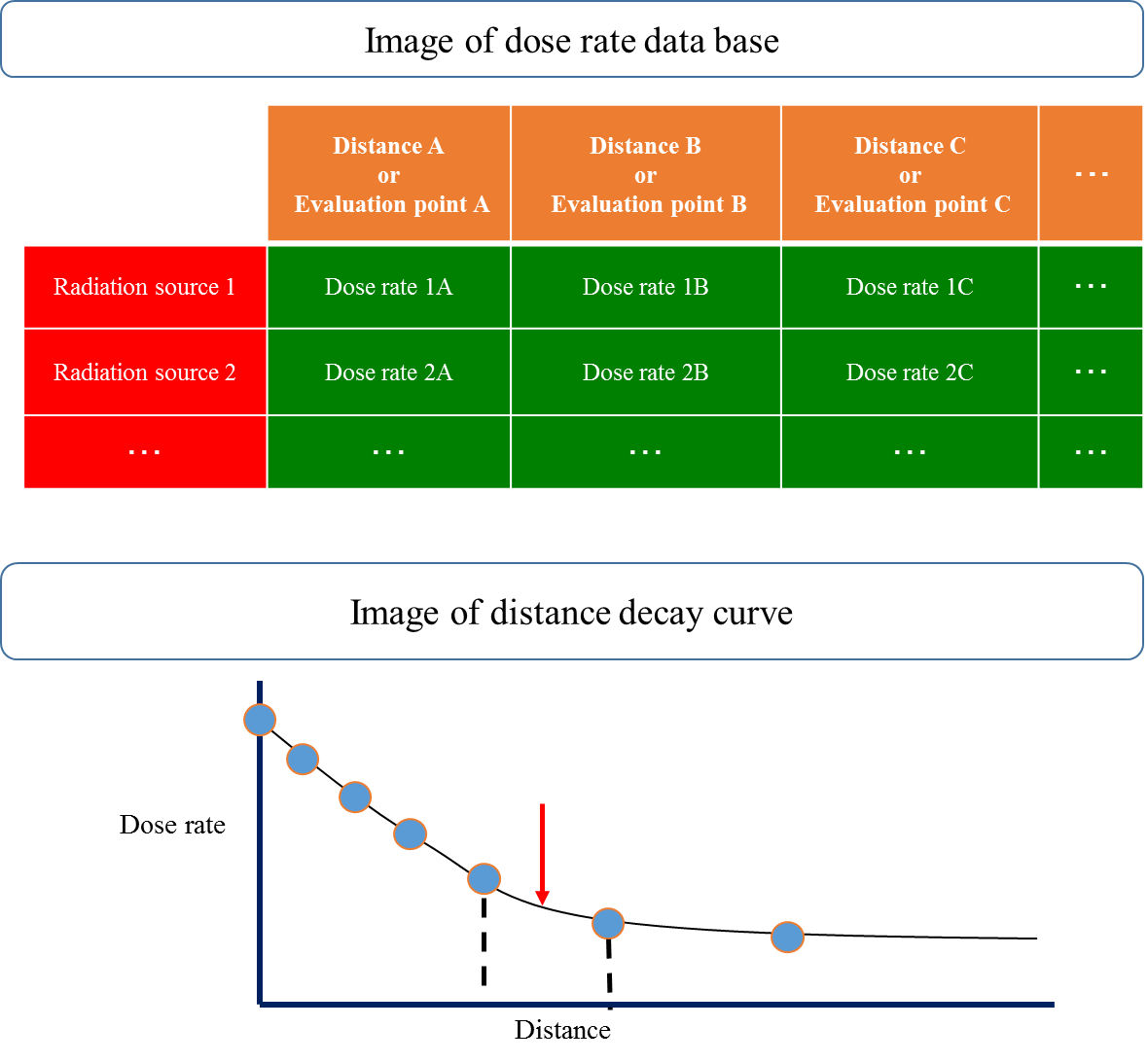
Fig.3 Image of dose rate DB and distance decay curve
(2) Dose rate evaluation process Dose rate at each evaluation point for the detail model is evaluated by integrating the values of the database calculated by the radiation codes. Dose rate for cylindrical model is evaluated by interpolating the radiation curve at the distance between the radiation source and the evaluation point. It is also possible to calibrate the effect of the difference of the elevation. (Fig.4)
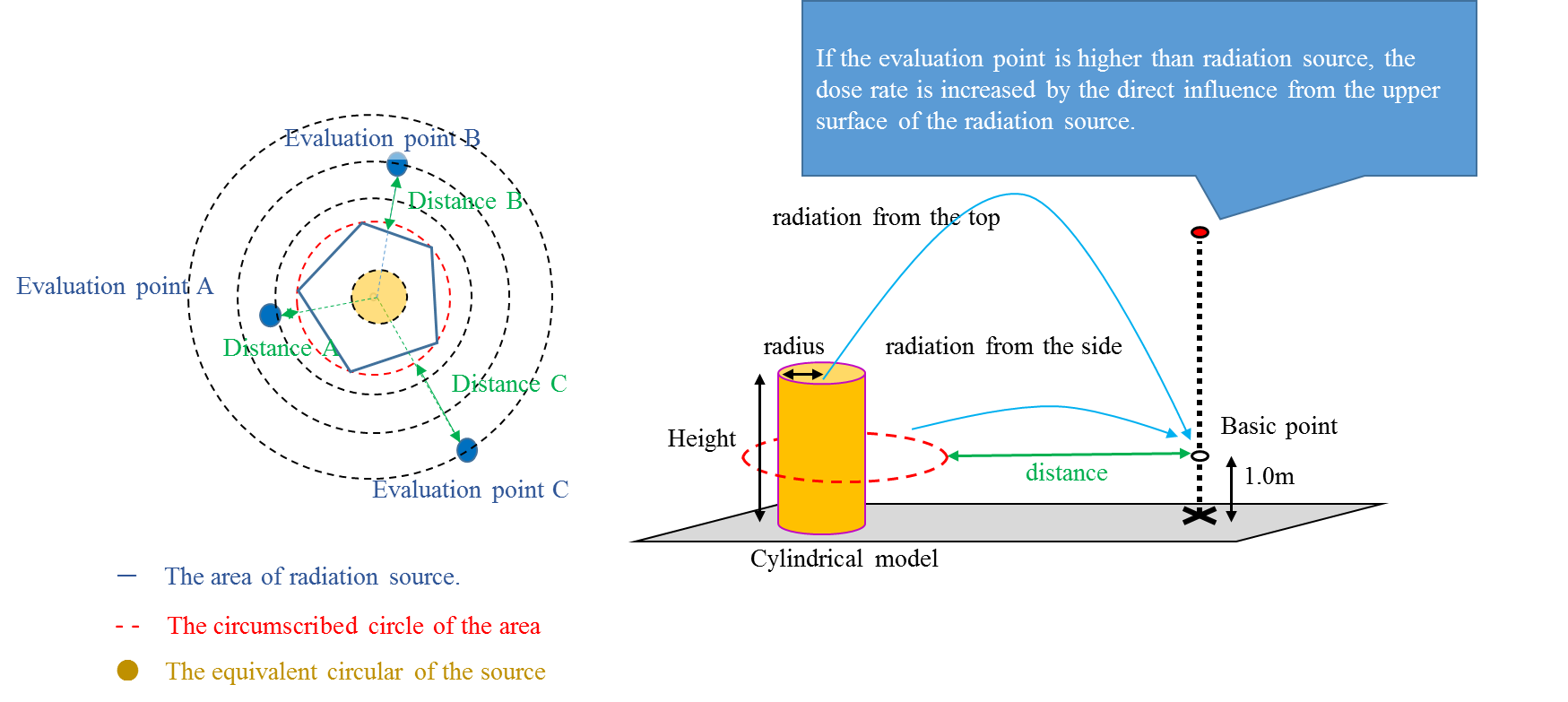
Fig.4 Relationship diagram of evaluation point and cylindrical model
(3) Output The evaluated results are displayed as a bar graph to compare to other evaluation points, or a bar graph to indicate constitutes of the radiation sources at each evaluation points.
An example of the screen shot of the system is shown in Fig.5.
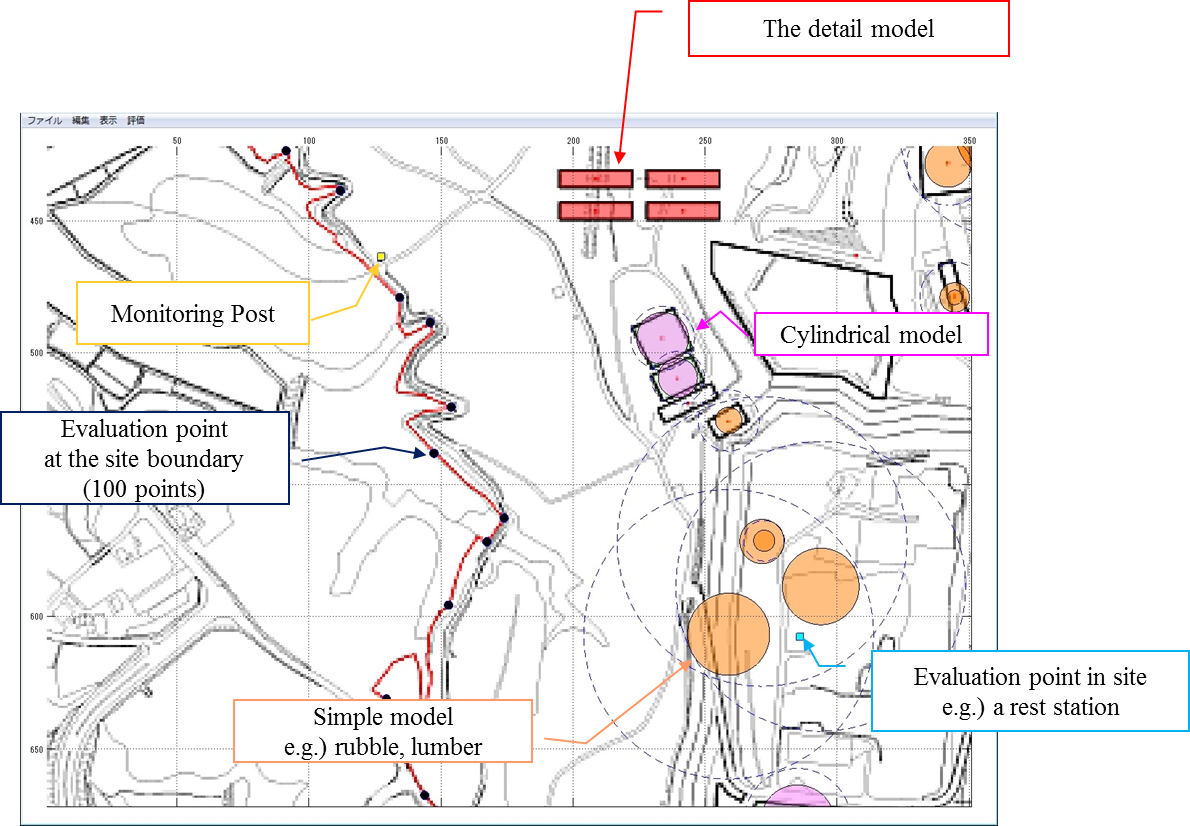
Fig.5 Main screen of ARES
- (1) Components:
Radioactive substance storage facility, Radioactive water treatment facility, Radioactive water storage tank, Radioactive lumbers and rubbles storage area
- (2) Location:
The nuclear power plant, The radioactive waste treatment plant (e.g. the radioactive waste storage facility, the radioactive sludge processing facility)
- (3) Materials: N/A
- (4) Condition: N/A
- (1)Dose rate evaluation at the evaluation points in the whole site.
- The ARES evaluates total values of the dose rate for each evaluation points in the whole site. Besides, it is also possible to evaluate the contribution from each radiation sources at the evaluation points. (Fig.6 and Fig.7)
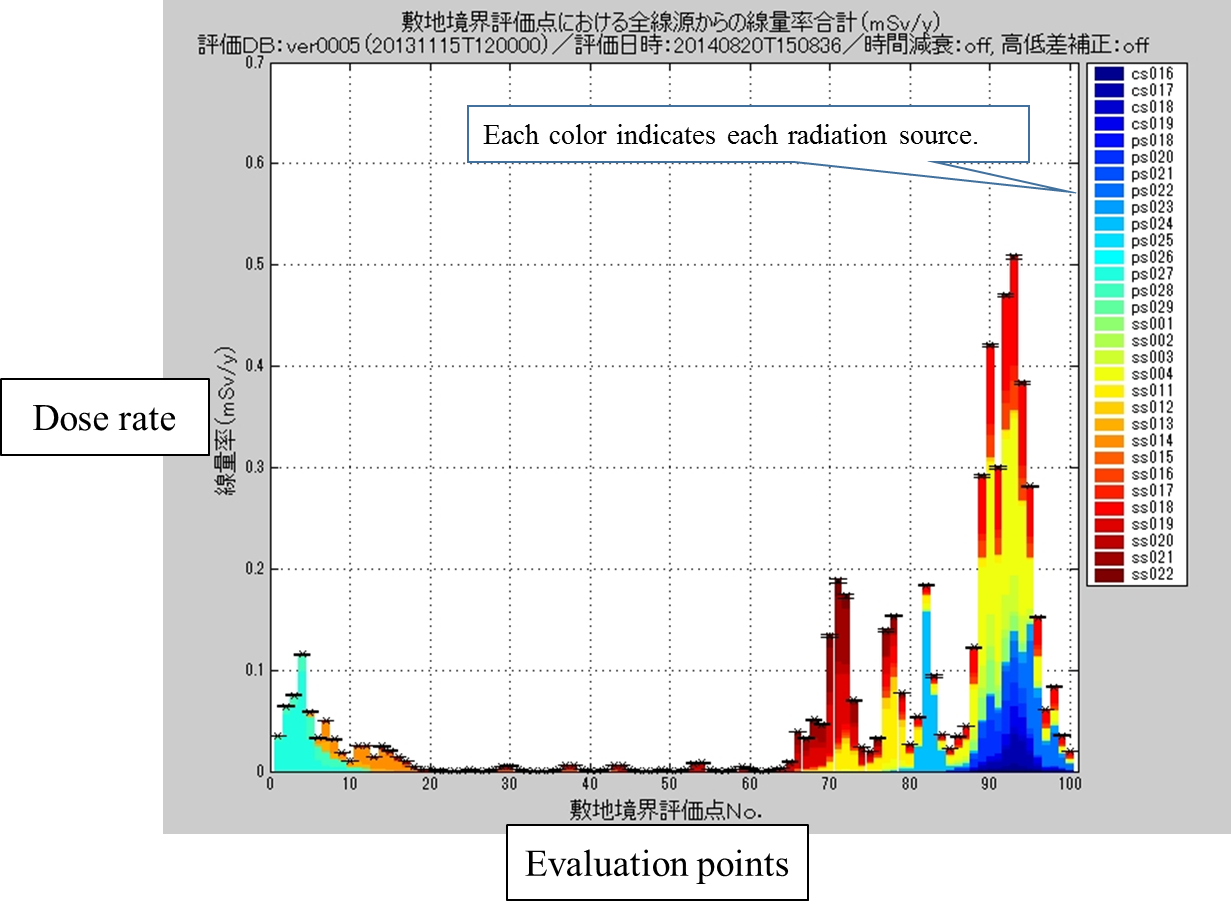
Fig.6 Result of dose rate evaluation at all evaluation points
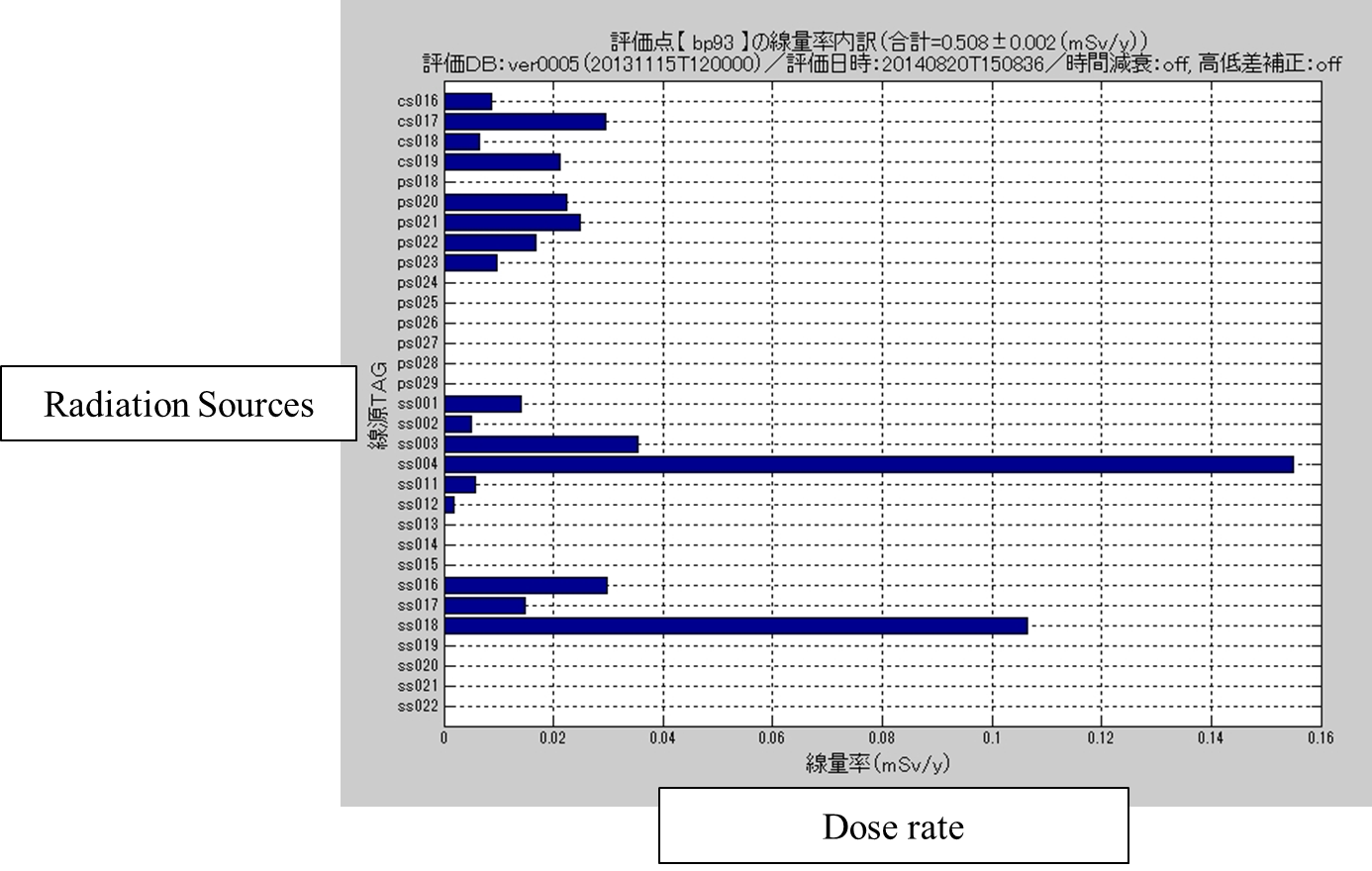
Fig.7 Result of the contribution from each radiation sources at the evaluation point
- (2)Adding a simple model of radiation source
- User can add a simple model of radiation source – a cylindrical model having limited nuclide: Cs134, Cs 137, and Co60. However, since the shielding effect cannot be considered in this model, its application is limited to the storage area of felled trees and rubbles. (Fig.8)
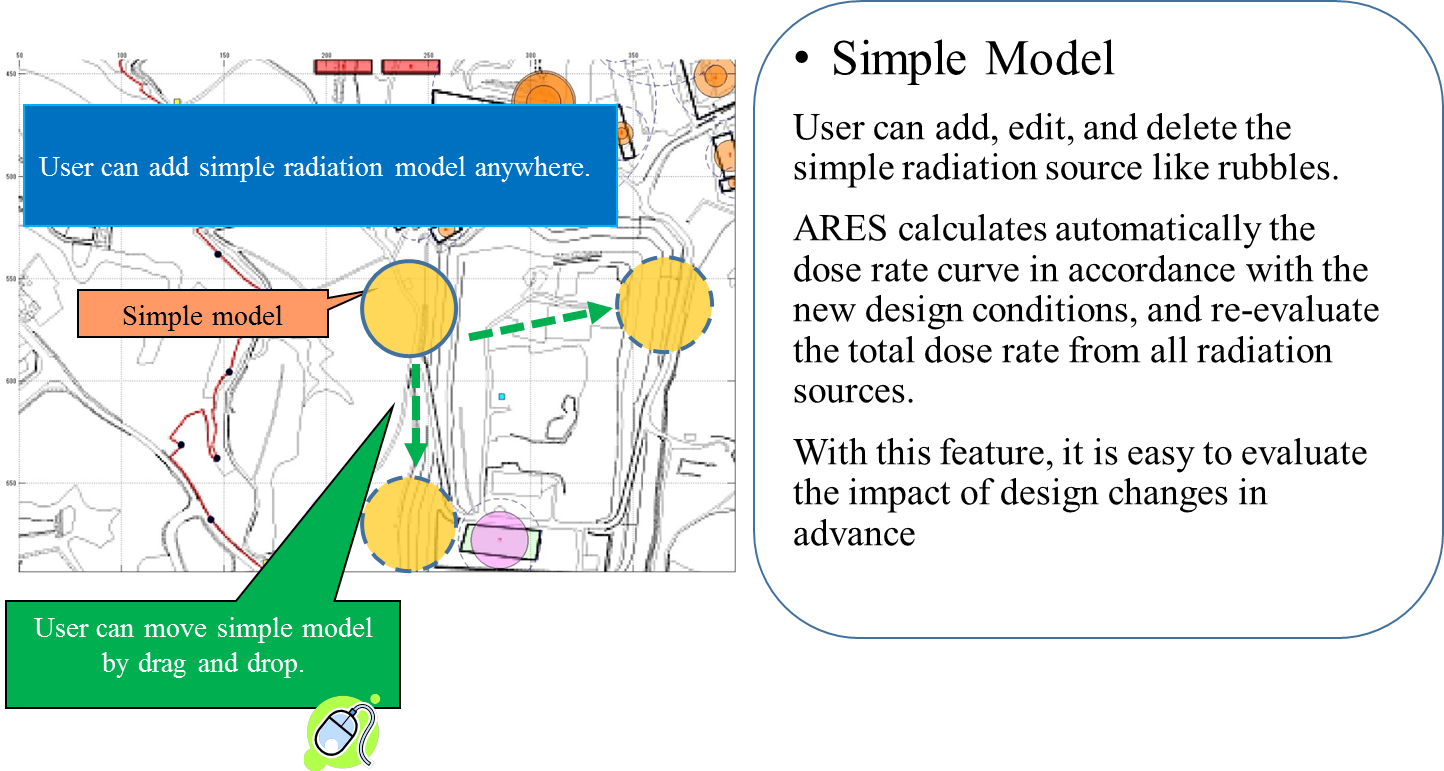
Fig.8 Adding a simple radiation source
- (3)Dose rate evaluation at an optional point
- The dose rate and constitutes of the dose at an optional point on the site map can be evaluated by assuming all radiation sources as cylindrical model.
- (4)Dose rate map
- The dose rate on the whole site map can be indicated as a coloring graphic map or a contour plot by the specified mesh width. (Fig.9)
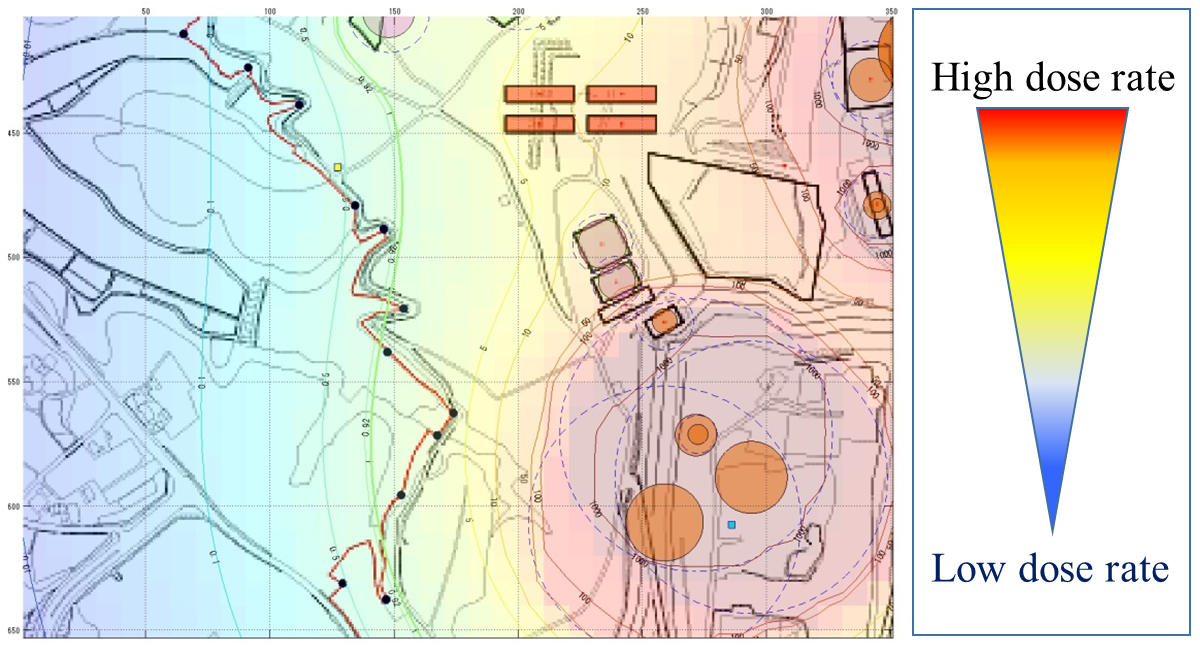
Fig.9 Dose rate map
Movie
5. Examples of Application
The ARES would be much useful to apply in such facilities where a lot of storage tanks for radioactive water or storage areas are located and renewed. The influence of radiation from new radiation sources, or replaced sources, and re-designed sources could be easily evaluated by ARES, so that results would be reported timely to the regulatory authorities and public peoples. For example, ARES can be used at
- Nuclear power plants under decommission, where rubbles may be placed outdoor temporarily.
- The sludge processing or storage facilities where the incineration ash containing the radioactive materials is stored temporarily.
- Temporary storage facilities of radioactive waste of the decontamination
- Operated nuclear power plants.
6. Reference
- [1]杉浦, 松井, 久保田, 他,”放射性廃棄物保管設備等からの敷地境界線量率評価システム(ARES)の開発;(2) 仕様及び機能”, 日本原子力学会2014年秋の大会予稿集, O17, 2014.
- [2]平, 白木, 込山, 他,”放射性廃棄物保管設備等からの敷地境界線量率評価システム(ARES)の開発;(1) 開発の経緯”, 日本原子力学会2014年秋の大会予稿集, O18, 2014.
Japan Society of Maintenology (ejam@jsm.or.jp)




